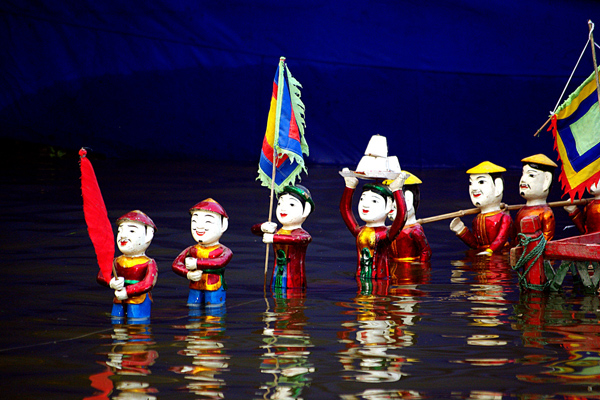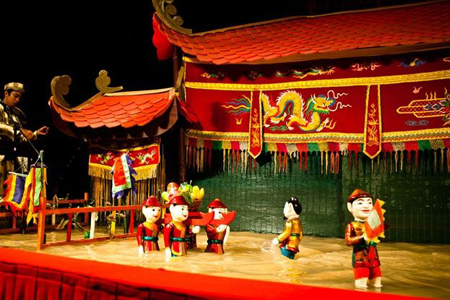Rivers, lakes, and ponds are familiar sights in the natural landscape of Vietnam. In the process of growing and harvesting paddy rice, Vietnamese peasants have to cope with constant natural disasters and a difficult environment.

Village festivals, usually help to mark either the end or beginning of the agricultural cycle, are the means by which the peasant express their hopes for more abundant crops, through which they derive enjoyment and diversion. Each village festival features traditional folk entertainments that reflect ancient religious beliefs as well as customs, such as boat-racing, wrestling, swinging, kite-flying, bird racing, fire-crackers, and so on. At festivals in the delta region of (the North), there is usually a puppet show on the surface of a lake or pond. Village ponds constitute a vital factor in the ecology of the plains of North Vietnam. People dug these ponds to obtain earth with which they raise the level of the floors of their houses against heavy rain and flooding. Ponds also constitute a source of water for cultivation and daily use. They also contribute to the peasant's incomes by producing cattle feed. The location of a water puppet theatre is selected in accordance with the scope of a show. It may be a permanent structure forming part of an architectural complex with the (Waterside pavilion), for example, at Thay pagoda'" and at Dong temple'", Most water puppet theatres built for temporary use were intended for itinerant shows and located in places both convenient for audiences and linked to festival entertainments, since water puppetry was a village festival art form before it became a theatrical one, as it is today.



